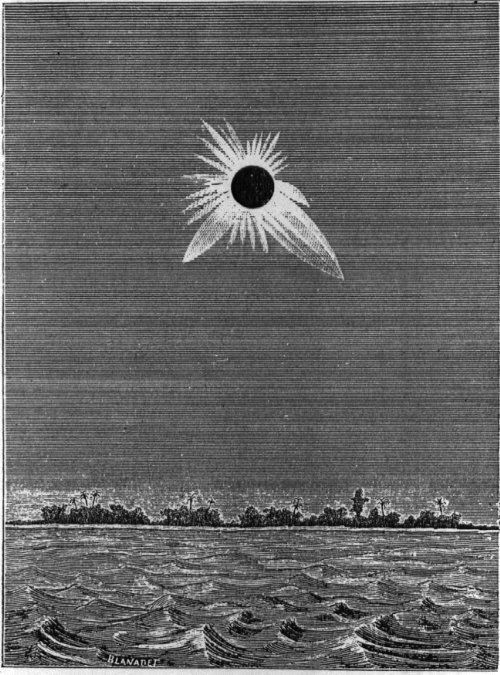Nature Total Magnitude 1.0634 Max. width of band 229 km (142 mi) Start date May 6, 1883 | Gamma -0.425 Duration 358 sec (5 m 58 s) Greatest eclipse 21:53:49 | |
 | ||
A total solar eclipse occurred on May 6, 1883. A solar eclipse occurs when the Moon passes between Earth and the Sun, thereby totally or partly obscuring the image of the Sun for a viewer on Earth. A total solar eclipse occurs when the Moon's apparent diameter is larger than the Sun's, blocking all direct sunlight, turning day into darkness. Totality occurs in a narrow path across Earth's surface, with the partial solar eclipse visible over a surrounding region thousands of kilometres wide. The path of totality fell across the southern Pacific Ocean with no major landfall. Partiality was visible from far eastern Australia at sunrise, and New Zealand, as well as western South America and southern Mexico near sunset. This eclipse is a member of Solar Saros 136, and its maximum duration was 5 minutes and 58 seconds.
Contents
Observations
An expedition of American astronomers traveled from Peru to Caroline Island aboard the USS Hartford to observe the total solar eclipse. A French expedition also observed the eclipse from Caroline, and the United States Navy mapped the atoll. Johann Palisa, a member of the expedition, discovered an asteroid later that year which he named Carolina "in remembrance of his visit to [the] island."
Saros 136
Solar Saros 136, repeating every 18 years, 11 days, contains 71 events. The series started with partial solar eclipse on Jun 14, 1360, and reached a first annular eclipse on September 8, 1504. It was a hybrid event from November 22, 1612, through January 17, 1703, and total eclipses from January 27, 1721 through May 13, 2496. The series ends at member 71 as a partial eclipse on July 30, 2622, with the entire series lasting 1262 years. The longest eclipse occurred on June 20, 1955, with a maximum duration of totality at 7 minutes, 8 seconds.
